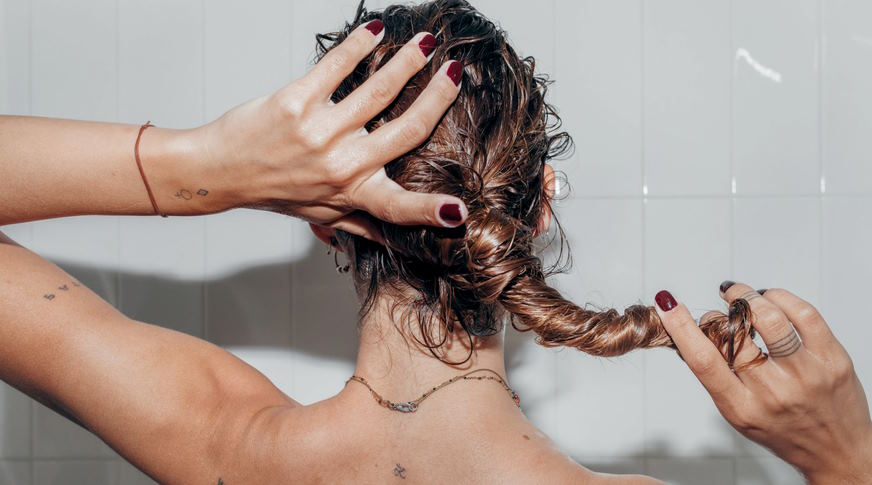If you’ve been struggling with damaged hair that feels weak, brittle, or lacks vitality, then you’re in the right place. We all know that our hair goes through a lot, from heat styling to chemical treatments, environmental factors, and more. Over time, all of these factors can take a toll on our hair, leaving it in need of some serious repair and strengthening. But fear not! In this blog post, we’ll be diving into the power of protein treatments for repairing and strengthening damaged hair. Protein treatments have been gaining popularity in the world of hair care, and for good reason. They can work wonders in reviving your locks and giving them the much-needed boost they deserve.
Types of Protein Treatments
Protein-Based Conditioners: Protein-based conditioners are regular conditioners that are enriched with additional proteins, such as keratin, collagen, or wheat protein. These conditioners are designed to be used after shampooing to help repair and strengthen the hair cuticle, providing added nourishment and moisture to damaged hair. They are typically used as a part of a regular hair care routine and can be used on a weekly or bi-weekly basis, depending on the level of hair damage.

- Protein-Based Masks: Protein-based masks are deep conditioning treatments that contain a higher concentration of proteins compared to regular conditioners. These masks are typically applied to damp hair and left on for a longer period of time to allow the proteins to penetrate deeply into the hair shaft and provide intensive repair and strengthening benefits. Protein-based masks are ideal for hair that is severely damaged or has undergone chemical treatments, such as coloring, perming, or straightening.
- Protein-Based Treatments: Protein-based treatments are specialized hair treatments that are formulated with a higher concentration of proteins and are designed to provide intensive repair and strengthening benefits. These treatments are often used in professional hair salons and can come in various forms, such as leave-in treatments, ampoules, or serums. Protein-based treatments are typically used for hair that is severely damaged or in need of immediate repair, and they are applied according to the manufacturer’s instructions.
When choosing protein treatments, it’s important to consider the source of proteins used in the product. Proteins can be derived from animals or plants, and there are differences between the two in terms of their effectiveness and potential allergenicity. Animal-derived proteins, such as keratin and collagen, are extracted from animal sources like sheep’s wool or bovine hides. These proteins are known for their ability to effectively repair and strengthen hair, but they may not be suitable for those who prefer cruelty-free or vegan options. On the other hand, plant-derived proteins, such as wheat protein, soy protein, or pea protein, are derived from plant sources and are considered more sustainable and eco-friendly. These proteins also have excellent hair-strengthening properties and are often used in vegan or cruelty-free hair care products.
When looking for protein treatments, it’s essential to check the ingredient list for key protein ingredients, such as keratin, collagen, wheat protein, soy protein, pea protein, or other plant-derived proteins. These proteins have different molecular sizes and properties, and each can offer unique benefits for repairing and strengthening damaged hair. Keratin, for example, is a protein that is naturally present in the hair and is known for its ability to improve hair elasticity and resilience. Collagen is a protein that can help to rebuild damaged hair shafts and improve hair’s overall structural integrity. Wheat protein is a plant-derived protein that is rich in amino acids, which are the building blocks of hair, and can help to strengthen and repair damaged hair. Other plant-derived proteins, such as soy protein or pea protein, can also offer similar benefits in repairing and strengthening damaged hair.
How to Use Protein Treatments
Step 1: Cleanse Your Hair
Rinse thoroughly and gently squeeze out excess water from your hair, leaving it damp but not soaking wet.
Step 2: Apply the Protein Treatment
Depending on the type of protein treatment you are using, apply it evenly to your damp hair, focusing on the mid-lengths to ends, which are usually the most damaged parts of the hair. Use a wide-toothed comb or your fingers to distribute the treatment evenly through your hair, ensuring that every strand is coated with the product.
Step 3: Follow the Manufacturer’s Instructions
It’s crucial to carefully follow the manufacturer’s instructions on the protein treatment product. Different protein treatments have varying application and processing times, so make sure to read and follow the instructions provided. Avoid leaving the treatment on your hair for longer than recommended, as it can lead to over-proteinization, which can make your hair feel stiff, dry, and brittle.
Step 4: Rinse Thoroughly
After the recommended processing time, rinse your hair thoroughly with lukewarm water to remove the protein treatment completely. Make sure to rinse your hair thoroughly, as any residue left behind can weigh down your hair and affect the results.
Step 5: Condition Your Hair
After rinsing out the protein treatment, it’s essential to follow up with a moisturizing conditioner to restore the moisture balance in your hair. Look for a conditioner that is specifically formulated for use after protein treatments, as it can help to lock in the protein and provide additional hydration to your hair.
Step 6: Style Your Hair as Usual
Once you have rinsed out the conditioner, you can style your hair as usual using your preferred styling products and tools.
Frequency of Protein Treatments
The frequency of protein treatments depends on your hair type and the level of damage. If your hair is severely damaged or chemically treated, you may need to use protein treatments more frequently, such as once a week or every two weeks, to help repair and strengthen your hair. If your hair is only moderately damaged or in relatively good condition, you can use protein treatments less frequently, such as once a month or as needed.

Maintaining Healthy Hair
Achieving healthy and strong hair goes beyond just using protein treatments. It requires a holistic approach to hair care that involves a proper cleansing, conditioning, and styling routine, as well as incorporating protein treatments as part of your regular hair care regimen. Here are some tips on how to maintain healthy hair and make the most out of your protein treatments:
Proper Cleansing
Regularly cleansing your hair is crucial for maintaining its health. Choose a gentle shampoo that is suitable for your hair type and use it to remove dirt, oil, and product buildup from your scalp and hair. Avoid using hot water, as it can strip the natural oils from your hair and make it dry and prone to damage. Instead, opt for lukewarm or cool water, and gently massage your scalp with your fingertips to stimulate blood circulation and promote a healthy scalp.
Conditioning
Conditioning is an essential step in your hair care routine, as it helps to replenish moisture and nutrients to your hair, making it soft, smooth, and manageable. After shampooing, apply a nourishing conditioner from mid-lengths to ends, focusing on the areas that need extra care, such as the ends and any damaged or processed hair. Leave the conditioner on for the recommended time, then rinse thoroughly with cool water to seal the cuticles and lock in the moisture.
Styling with Care
Using heat-styling tools, such as blow dryers, straighteners, and curling irons, can cause damage to your hair over time. If possible, limit your use of heat-styling tools or use them on the lowest heat setting. Always apply a heat protectant spray before styling to create a barrier between your hair and the heat. Avoid tight hairstyles that can pull on your hair and cause breakage. Instead, opt for loose hairstyles and use hair-friendly accessories, such as hair ties without metal parts or silk/satin scrunchies, to prevent hair damage.
Preventing Future Damage
Taking preventive measures is key to maintaining healthy hair. Avoid using harsh hair care products that contain sulfates, parabens, and alcohol, as they can strip your hair of its natural oils and cause damage. Be gentle when detangling your hair, and use a wide-toothed comb or a brush with soft bristles to avoid breakage. Protect your hair from the sun by wearing a hat or using a UV-protective spray. Additionally, try to minimize chemical treatments, such as coloring, perming, or relaxing, as they can weaken the hair structure and cause damage.
Long-term Benefits of Protein Treatments
Incorporating protein treatments as part of your regular hair care routine can have long-term benefits for your hair. Protein treatments can help repair and strengthen damaged hair, improve elasticity, reduce breakage, and increase overall hair health. By replenishing the protein lost from your hair due to environmental factors, chemical treatments, and styling, protein treatments can help restore the structural integrity of your hair and promote its resilience against future damage.
Protein treatments work best when used in moderation and in conjunction with a healthy hair care routine. They can help maintain the results of previous treatments and improve the overall health and appearance of your hair over time. However, it’s important to follow the manufacturer’s instructions, avoid overusing protein treatments, and strike a balance between protein and moisture in your hair care regimen.
